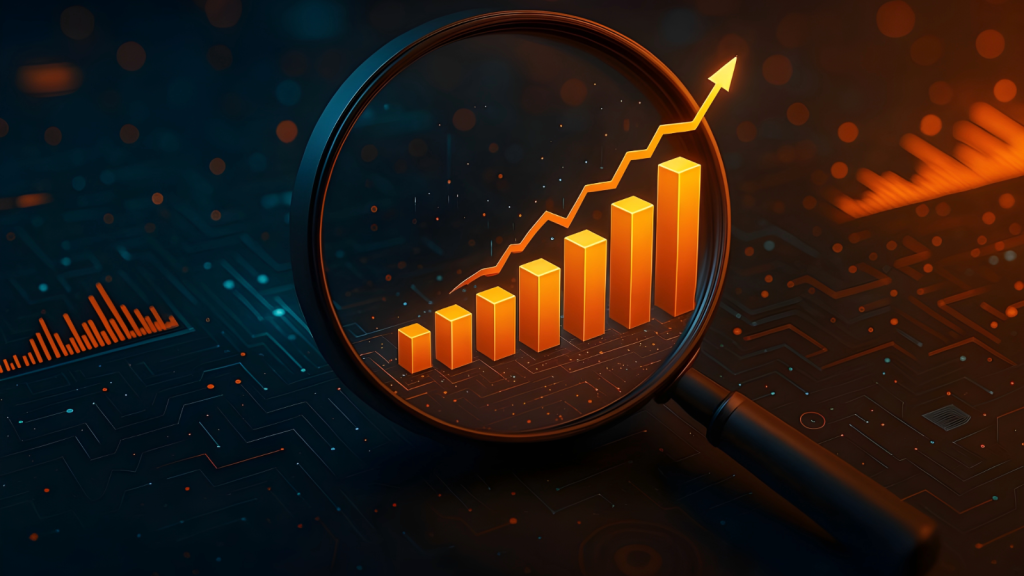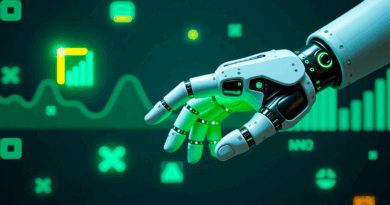AI’s Profit Window Is Wide Open – Here’s How to Time It
Success in investing isn’t just about picking the right companies. It’s about picking them at the right time.
And, while it may not feel like it, pinpointing that ideal time isn’t a game of chance.
See; every technology and every stock follows the same repeatable, predictable pattern, which occurs in four stages.
In some of those stages, stocks rise. In others, they fall. The key to making money in any stock, in any market, at any time, is to buy and sell only at the right stages.
It’s a simple yet well-guarded secret to generating wealth on Wall Street. And it seems that very few people know about it.
Most investors stumble because they never learn to see where a stock sits in its life cycle. But once you grasp the four phases, you can spot when fortunes are made – and when they’re lost.
Perhaps nowhere is this clearer than in artificial intelligence. AI stocks have already blown through their introduction phase at record speed, and the sector is now in the explosive stage where the biggest profits are minted.
Take a look.
The 4 Stages of Every Stock and Where AI Stocks Are Now
Phase 1: Introduction
For most of human history, transformational innovations have proliferated very gradually. Take the automobile: first patented by Karl Benz – co-founder of Mercedes-Benz – in 1886.
Benz is largely considered the father of the automobile. But it wasn’t until 1908, when Henry Ford introduced the Model T, that the automobile entered mass production. Over the next few years, throughout the 1910s, improvements in the production process made these cars more affordable and available, priming them for faster adoption.
In other words, the automobile’s ‘introduction’ phase lasted for about 30 years.
Let’s compare that to the era of artificial intelligence.
We can tie AI’s ‘introduction’ back to ChatGPT’s grand debut in late 2022. In less than 12 months – by late 2023 – it surpassed 100 million weekly users. That means it rocketed from nascent to mainstream in less than one year…
AI’s introduction lasted just a few months – making it the fastest-growing technology in human history.
It’s now squarely in Phase 2: Growth.
Phase 2: Growth
Now, Phase 2 is the splashiest and most exciting of all. It’s an era of swift adoption.
For a moment, let’s return to our review of the automobile’s rise.
Following Ford’s production improvements in the 1910s, the 1920s saw the ‘true automobile revolution’ as U.S. ownership rapidly increased. In 1920, 20% of Americans had automobiles. But by 1929, 60% of U.S. families owned a car, with more vehicles per household than ever before. That’s a 200% increase within the decade.
This shows just how explosive this phase of growth can be. For this reason, it’s also when the most fast-and-furious stock returns are made.
As we mentioned, AI entered this phase within a mere 12 months, meaning it’s now been in Phase 2 since early 2024. In that time, the sector has seen some meteoric stock market gains…
Those are some monster triple-, even quadruple-digit returns – the kind that could produce generational wealth if you play your cards right.
However… considering the fact that AI is the fastest growing technology in human history – achieving mass adoption in record time – it’s inevitable that this phase of growth won’t last long, either…
Phase 3: Maturity
Indeed, no party lasts forever. Eventually, a technology reaches mass adoption, and the excitement begins to fizzle. For the automobile, this phase arguably began in the 1950s.
By 1955, over 7 million U.S. cars were sold annually, and 80% of households owned a car. The market consolidated around the “Big Three” – General Motors (GM), Ford (F), and Chrysler – which controlled ~90% of the U.S. market. And by this time, the post-WWII boom had ended, with car sales becoming cyclical.
This phase of maturity is when stocks typically trade in a sideways-to-lower pattern. This reflects the push and pull of investors who are sitting on big profits and selling to new investors who are late to the party.
While the Phase-2 buying frenzy marked a generally steady rise in prices, the ‘Maturity’ period is characterized by a trading channel.
For AI, this could mean a handful of giants dominate, while many others stagnate.
Then comes a correction.
Phase 4: Decline
This is the least-enjoyable part of the life cycle – sort of like the hangover after a party.
On Wall Street, investors tend to go wild for elite growth stocks and bid them up to unsustainable levels.
A Phase 4 decline “washes away” those excesses and sets realistic expectations for stocks.
Such corrections can come in different shapes and sizes. Stocks can fall 20%, 30%, 40%, even 60% from their highs. And these declines can last months or even years.
So, if you’re interested in riding top growth stocks for short- to medium-term profits while avoiding what can be substantial, painful drawdowns, the lesson is clear…
Restrict your buying only to stocks entering Phase 2!
That’s when fortunes are made.
The Final Word on Perfectly Timing a Profitable AI Trade
Now, as we said, Phase 2 doesn’t last forever.
Eventually, all technologies – and all stocks – enter maturity; and suddenly, all the mammoth growth potential is gone.
The automobile’s growth phase lasted 30-plus years. The television reached mass adoption in 11 years. The internet did it in five. For smartphones, it was three…
Clearly, the rate of technological adoption is increasing exponentially over time – meaning there’s no telling how long AI will remain in this highly profitable growth phase.
Perhaps another few months at most?
That’s why timing this opportunity is everything.
And it’s exactly why I built Nexus – a system engineered to detect when individual stocks may be transitioning from ‘Introduction’ to ‘Growth.’ That precise moment is the sweet spot for tapping into potentially huge returns.
This system uses several different behavioral indicators to detect when human psychology may be shifting around a company. It analyzes volume spikes, buying pressure, when optimism replaces skepticism – all signals that the crowd may be about to rush in, triggering a major stock breakout.
Most investors get it wrong. They buy too early or too late. Nexus is built to zero in on the only time that matters – the breakout into Phase 2.
Right now, AI is flipping companies from obscurity to hypergrowth overnight. But the data suggests this era won’t last much longer.
That’s why I’m challenging readers to seize this rare profit opportunity while they still can.
With Nexus, you don’t have to guess. You just have to act.
Click here to learn more now.
The post AI’s Profit Window Is Wide Open – Here’s How to Time It appeared first on InvestorPlace.






